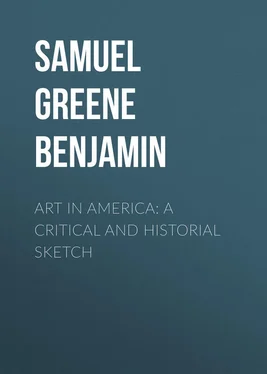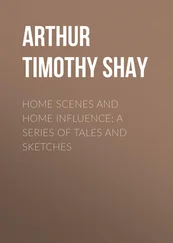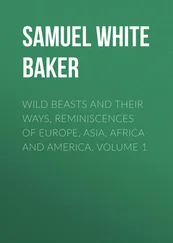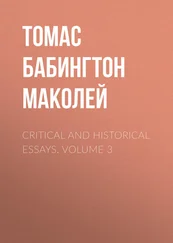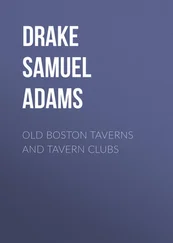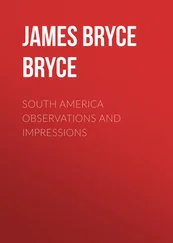Samuel Benjamin - Art in America - A Critical and Historial Sketch
Здесь есть возможность читать онлайн «Samuel Benjamin - Art in America - A Critical and Historial Sketch» — ознакомительный отрывок электронной книги совершенно бесплатно, а после прочтения отрывка купить полную версию. В некоторых случаях можно слушать аудио, скачать через торрент в формате fb2 и присутствует краткое содержание. Жанр: foreign_antique, foreign_prose, на английском языке. Описание произведения, (предисловие) а так же отзывы посетителей доступны на портале библиотеки ЛибКат.
- Название:Art in America: A Critical and Historial Sketch
- Автор:
- Жанр:
- Год:неизвестен
- ISBN:нет данных
- Рейтинг книги:4 / 5. Голосов: 1
-
Избранное:Добавить в избранное
- Отзывы:
-
Ваша оценка:
- 80
- 1
- 2
- 3
- 4
- 5
Art in America: A Critical and Historial Sketch: краткое содержание, описание и аннотация
Предлагаем к чтению аннотацию, описание, краткое содержание или предисловие (зависит от того, что написал сам автор книги «Art in America: A Critical and Historial Sketch»). Если вы не нашли необходимую информацию о книге — напишите в комментариях, мы постараемся отыскать её.
Art in America: A Critical and Historial Sketch — читать онлайн ознакомительный отрывок
Ниже представлен текст книги, разбитый по страницам. Система сохранения места последней прочитанной страницы, позволяет с удобством читать онлайн бесплатно книгу «Art in America: A Critical and Historial Sketch», без необходимости каждый раз заново искать на чём Вы остановились. Поставьте закладку, и сможете в любой момент перейти на страницу, на которой закончили чтение.
Интервал:
Закладка:
The influences cited as giving direction to the struggling efforts of art in our country during the early part of this century are illustrated with especial force by five portrait, figure, and landscape-painters, who may almost be considered the founders of this period of our art – Harding, Weir, Cole, Doughty, and Durand.
Chester Harding was a farmer's son, who, after an apprenticeship in agriculture, took up the trade of chair-maker at twenty-one, the time when the young Parisian artist has already won his Prix de Rome . After this he tried various other projects, including those of peddling and the keeping of a tavern; and then took his wife and child and floated on a flat-boat down the Alleghany to Pittsburgh – at that time a mere settlement – in search of something by which to earn a bare living. There he took to sign-painting; and it was not until his twenty-sixth year that the idea of becoming a professional artist entered his head. An itinerant portrait-painter coming to the place first suggested the idea to Harding, who engaged him to paint the portrait of Mrs. Harding, and took his first art-lesson while looking over the artist's shoulder; and his first crude attempts so fascinated him that he at once adopted art as a profession, and in six months painted one hundred likenesses, such as they were, at twenty-five dollars each, and then settled in Boston, where he seems to have been taken up with characteristic enthusiasm. On going to England, Harding, notwithstanding the few advantages he had enjoyed, seemed to compare so favorably with portrait-painters there that he was patronized by the first noblemen of the land. Although belonging also to the latter part of the period immediately preceding that now under consideration, yet Harding was, on the whole, an important factor in the art which dates from the founding of the National Academy, and was one of the strongest of the group of portrait-painters naturally associated with him, such as Alexander, Waldo, Jarvis, and Ingham. There was something grand in the personality of Harding, not only in his almost gigantic physique but also his sturdy, frank, good-natured, but earnest and indomitable character, which causes him to loom up across the intervening years as a type of the people that have felled forests, reclaimed waste places, and given thews and sinews to the Republic that in a brief century has placed itself in the front rank of nations.
While Harding, with all his artistic inequalities, fairly represented the portrait art of Boston at that, period, Henry Inman may be considered as holding a similar position in New York. As a resident of that city and a pupil of Jarvis, he enjoyed advantages of early training superior to those of most of our painters of that day. Exceedingly versatile, and excelling in miniature, and doing fairly well in genre and landscape, Inman will be best known in future years by his admirable oil portraits of some of the leading characters of the time. He was a man of great strength and symmetry of character, who would have won distinction in any field, and his early death was a misfortune to the country.
New York became the centre for a number of excellent and characteristic portrait-painters soon after Inman established his reputation – such as Charles Loring Elliott, Baker, Hicks, Le Clear, Huntington, and Page, the contemporaries of Healy, Ames, Hunt, and Staigg, of Boston, and Sully, of Philadelphia – all artists of individual styles and characteristic traits of their own. Sully, owing to his great age, really belonged also to the preceding period of our art.
In Elliott we probably find the most important portrait-painter of this period of American art. It was a peculiarity of his intellectual growth that only by degrees did he arrive at the point of being able to seize a simple likeness. But it is not at all uncommon for genius to falter in its first attempts; and Elliott was one of the few artists we have produced who could be justly ranked among men of genius, as distinguished from those of talents, however marked. Stuart excelled all our portrait-painters in purity and freshness of color and masterly control of pigments; but he was scarcely more vigorous than Elliott in the wondrous faculty of grasping character. Herein lay this artist's strength. He read the heart of the man he portrayed, and gave us not merely a faithful likeness of his outward features, but an epitome of his intellectual life and traits, almost clutching and bringing to light his most secret thoughts. In studying the portraits of Elliott we learn to analyze and to discern the essential and irreconcilable difference between photography and the highest order of painting. The sun is a great magician, but he cannot reproduce more than lies on the surface – he cannot suggest the soul. He is like a truthful but unwilling witness, who gives only part, and not always the best part, of the truth. But then the genius of the great artist steps in, completes the testimony, and presents before us suggestions of the immortal being that shall survive when the mortal frame and the sun which photographs it have alike passed away.
Baker, on the other hand, has excelled in rendering the delicate color and loveliness of childhood, and the splendor of the finest types of American feminine beauty. The miniatures of Staigg are also among the most winning works of the sort produced by our art. Among other excellent miniature-painters of this period was Miss Goodrich, of whose personal history less is known than of any other American artist.
William Page occupies a phenomenal position in the art of this period, because, unlike most of our painters, he has not been content to take art methods and materials as he found them, but has been an experimentalist and a theorist as well, and therefore belongs properly to more recent phases of our art. Thus, while he has achieved some singularly successful works in portraiture and historical painting, he has done much that has aroused respect rather than enthusiasm.
If less refined in aim and treatment than Page in his rendering of female beauty, Henry Peters Grey, who was also an earnest student of Italian Renaissance art, succeeded sometimes to a degree which, if far below that of the masters whom he studied, was yet in advance of most of such art as has been executed by American painters, at least until very recently. "The Judgment of Paris" is certainly a clever if not wholly original work, and the figure of Venus a fine piece of form and color.
Daniel Huntington, the third president of the National Academy of Design, is a native of New York city, and has enjoyed advantages and successes experienced by very few of our early artists. A pupil of Morse and Inman, he is better known by the men of this generation as a pleasing portrait-painter; but the most important of his early efforts were in what might be called a semi-literary style in genre and historical and allegorical or religious art, in which departments he has won a permanent place in our annals by such compositions as "Mercy's Dream," "The Sibyl," and "Queen Mary Signing the Death-warrant of Lady Jane Grey."
While portraiture has been the field to which most of our leading painters of the figure have directed their attention during this period, genre has been represented by several artists of decided ability, who, under more favorable art auspices, might have achieved superior results. Inman was one of the first of our artists to make satisfactory attempts in genre . If circumstances had allowed him to devote himself entirely to any one of the three branches he pursued, he might have reached a higher position than he did. But the most important genre artist of the early part of this period was William Sidney Mount, the son of a farmer on Long Island. Associated first with his brother as a sign-painter, he eventually, in 1828, took up genre painting. Mount lacked ambition, as he himself confessed; he was too easily influenced by the rapidly won approval of the public to cease improving his style, and early returned to his farm on Long Island. Mount was not remarkable as a colorist, although it is quite possible he might have succeeded as such with superior advantages; but he was in other respects a man of genius, who as such has not been surpassed by the numerous genre artists whom he preceded, and to whom he showed by his example the resources which our native domestic life can furnish to the genre painter. This American Wilkie had a keen eye for the humorous traits of our rustic life, and rendered them with an effect that sometimes suggests the old Dutch masters. "The Long Story" and "Bargaining for a Horse" are full of inimitable touches of humor and shrewd observations of human nature. F. W. Edmonds, who was a contemporary of Mount, although a bank cashier, found time from his business to produce many clever genre paintings, showing a keener eye for color, but less snap in the drawing and composition, than Mount.
Читать дальшеИнтервал:
Закладка:
Похожие книги на «Art in America: A Critical and Historial Sketch»
Представляем Вашему вниманию похожие книги на «Art in America: A Critical and Historial Sketch» списком для выбора. Мы отобрали схожую по названию и смыслу литературу в надежде предоставить читателям больше вариантов отыскать новые, интересные, ещё непрочитанные произведения.
Обсуждение, отзывы о книге «Art in America: A Critical and Historial Sketch» и просто собственные мнения читателей. Оставьте ваши комментарии, напишите, что Вы думаете о произведении, его смысле или главных героях. Укажите что конкретно понравилось, а что нет, и почему Вы так считаете.
